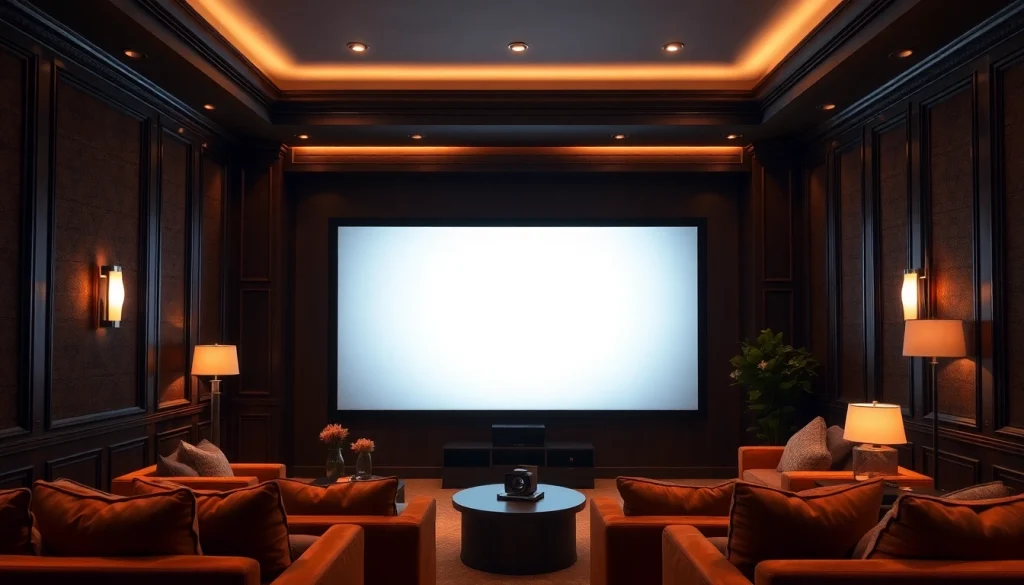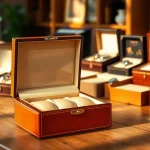Understanding Fixed Frame Projector Screens
What is a Fixed Frame Projector Screen?
A fixed frame projector screen is a permanent screen solution designed to provide a stable, taut display surface for projection. Unlike retractable screens, which may have a roller mechanism, fixed frame screens remain mounted in place, ensuring optimal film and video viewing experiences. These screens come equipped with a rigid frame that maintains the surface tension, preventing any warping or sagging of the screen material over time. Furthermore, the design allows for seamless integration into home theater systems, effectively transforming any space into a viewing paradise. For those seeking the Best Fixed Frame Projector Screen, the fixed frame variety frequently tops the list due to its aesthetic and performance capabilities.
Benefits of Using a Fixed Frame Projector Screen
When it comes to optimizing the projection experience, choosing a fixed frame projector screen offers several distinct benefits:
- Enhanced Image Quality: Fixed frame screens utilize high-quality materials that significantly enhance color contrast and brightness. The tensioned surface ensures a perfectly flat projection area, which is crucial for delivering crisp visuals.
- Permanent Installation: Once installed, a fixed frame projector screen requires no additional set-up for each use. This convenience makes it an ideal choice for regular movie nights, gaming sessions, or professional presentations.
- Aesthetic Appeal: These screens come in various designs that can complement the room’s décor, making them not only functional but also a stylish addition to your home or office.
- Variety of Formats: Fixed frame projector screens are available in different sizes and aspect ratios, catering to various content types from movies to presentations, thus making them incredibly versatile.
Key Features to Look for in the Best Fixed Frame Projector Screen
To ensure you select the best fixed frame projector screen for your needs, consider the following key features:
- Screen Material: Look for screens made from high-quality materials such as vinyl or woven fabric that enhance light reflection and color accuracy.
- Frame Construction: A sturdy frame is essential. Quality frames are typically made of metal or hardwood and are designed to hold the screen taut without sagging over time.
- Aspect Ratio: Choose a screen that aligns with your content. Common formats include 16:9 for widescreen movies and 4:3 for older presentations.
- Gain Factor: The gain refers to how much light is reflected back to the viewer. Screens typically have a gain of around 1.0, optimal for most settings, but there are variations like low-gain or high-gain options available as well.
- Ease of Installation: Some screens come pre-assembled, while others may require assembly. Consider your ability to install the screen correctly to avoid unnecessary hassle.
Top Considerations Before Buying
Size and Aspect Ratio for Your Space
One of the most crucial factors when selecting a fixed frame projector screen is its size and aspect ratio. Measure your wall space carefully to choose a screen that fits well in your home or office environment. The size of the screen should correspond to the distance between the projector and the screen as well as the seating arrangement.
Aspect ratio is equally important. For a standard home theater experience where movies are the primary focus, a 16:9 aspect ratio is recommended. However, if you also intend to use the screen for presentations or older films, consider a 4:3 ratio. Always ensure your projector is compatible with the chosen aspect ratio to maximize image quality.
Material Types and Their Impact on Quality
The material of the projector screen plays a crucial role in determining the quality of the projected image. Here are some popular material types and their characteristics:
- White Matte Finish: Excellent for color reproduction. Suitable for well-lit rooms but can lead to hotspot effects in bright conditions.
- Grey Screens: Designed to enhance contrast and are effective in environments where ambient light is a concern. Ideal for home theaters.
- Ambient Light Rejection (ALR): These screens are specifically engineered to reject undesired ambient light, making them suitable for bright rooms without sacrificing image quality.
Understanding your environment’s lighting conditions is key to selecting the right material. Each type brings its own set of advantages and drawbacks that can significantly affect your viewing experience.
Importance of Frame Construction
Frame construction is pivotal in choosing a fixed frame projector screen. A high-quality frame will not only support the screen adequately but also keep it taut throughout its lifespan. Look for frames made from durable and lightweight materials, such as extruded aluminum or solid timber. These usually come with a velvet trim that aids in hiding installation hardware and adds a touch of elegance. Make sure the frame is easy to assemble and install, as this will ultimately affect your ability to set up the screen without professional help.
Installation Tips for Optimal Performance
Best Practices for Mounting Your Fixed Frame Projector Screen
Proper installation of your fixed frame projector screen is crucial for achieving the best viewing experience. Here are some best practices:
- Choose the Right Height: The center of your screen should be at eye level when seated. Typically, this means placing the bottom of the screen about 36 to 42 inches from the floor.
- Consider Projection Distance: Ensure that the distance from the projector to the screen allows for a clear, focused image. Most projectors specify their recommended distance for optimal results.
- Mount Securely: Always use heavy-duty anchors and brackets to secure your screen frame to the wall. Make sure it is level for a perfect image.
Calibration Techniques for the Best Visuals
Once installed, calibrating both your projector and the fixed frame screen is vital. Follow these techniques to optimize your setup:
- Adjust Brightness and Contrast: Use test patterns available through the projector’s settings or online to determine the best brightness and contrast levels.
- Color Calibration: Take time to adjust color settings to achieve an accurate representation. This can involve fine-tuning via software or built-in calibration options on your projector.
- Check Alignment: Ensure your projector is aligned correctly, as a misalignment can lead to distortion or cropped images on the edges of the screen.
Troubleshooting Common Installation Issues
Even with careful installation, problems can arise. Here are some common issues and their solutions:
- Sagging Screen: If you notice your screen sagging, it may not be mounted properly. Reassess the mounting brackets and adjust them to pull the screen tighter.
- Image Overlap: This often indicates misalignment between the projector and the screen. Adjust the positioning carefully until the image fits the screen correctly.
- Distorted Image: If the image appears warped, check the settings on your projector and ensure the screen is flat. Calibration may also help reduce distortion.
Comparing the Best Fixed Frame Projector Screen Options
Price Ranges and What You Get
When shopping for fixed frame projector screens, you’ll find a broad range of price points, generally influenced by size, materials, and brand reputation. Basic options may start at a few hundred dollars, while high-end models can run into thousands. Understand what features align with your budget while ensuring you do not sacrifice quality. A more affordable screen may suffice for casual use, but serious home theater enthusiasts might want to invest more for premium features.
Evaluating User Reviews and Ratings
User reviews are instrumental in determining the effectiveness of a fixed frame projector screen. While considering customer feedback, pay attention to comments on installation ease, visual quality, and frame durability. Focus on reviews that mention how well the screen performs under various lighting conditions and its overall design. This kind of feedback can provide insights beyond manufacturer descriptions, guiding you toward a choice that aligns with your expectations.
Top Models to Consider
While there are many models available, the following key features are typically associated with the best options in the market:
- Tensioned Screens: These screens utilize a tension system to maintain a flat surface, which is ideal for high-resolution projection.
- Fast-Folding Screens: Perfect for users wanting a portable solution without giving up the fixed-frame benefits; they can be easily transported and set up again.
- Dual Aspect Ratio Screens: Designed with variable formats, allowing you to switch between viewing modes without the need of a separate screen.
Enhancing Your Home Theater Experience
Integrating Surround Sound with Your Screen
No home theater is complete without impressive audio to complement the stunning visuals. Integrate a surround sound audio system to elevate the movie-watching experience. 7.1 and 5.1 surround sound systems provide depth and richness, making films more immersive. Position your speakers strategically to create a balanced sound field. Typically, you’ll want front speakers placed to the sides of your screen at ear level, with surround speakers positioned above or to the sides of the viewing area.
Lighting Techniques to Elevate Viewing
Lighting can make or break your cinematic experience. Consider the following lighting techniques to create the perfect atmosphere:
- Dimmable Lighting: Install dimmable fixtures or smart lights that can be adjusted to suit the type of media being viewed.
- Ambient Light Management: Utilize blackout curtains or shades to eliminate external light sources during presentations or movie nights.
- Accent Lighting: Use LED strips or sconces to create subtle background lighting that enhances the room without distracting from the screen.
Decor Ideas for a Stunning Home Theater Setup
Creating a stunning home theater involves more than just a great screen and sound system. Consider these decor ideas to enhance your space:
- Comfortable Seating: Invest in high-quality seating, such as recliners or plush chairs, to ensure your guests enjoy both comfort and support during extended viewing nights.
- Themed Decor: Create a thematic atmosphere related to your favorite films or genres, through wall art, movie posters, or other memorabilia.
- Acoustic Treatments: Implement acoustic panels or soundproofing materials to improve sound quality within your home theater, ensuring a richer audio experience.


